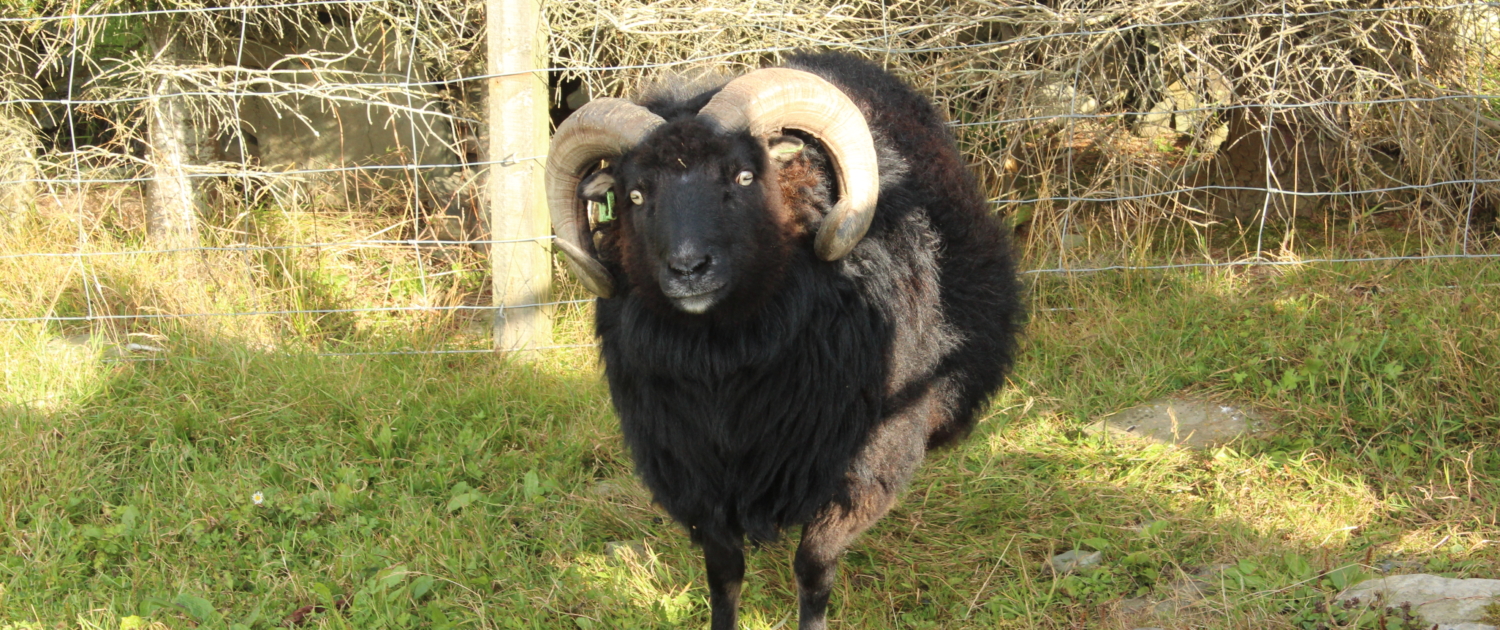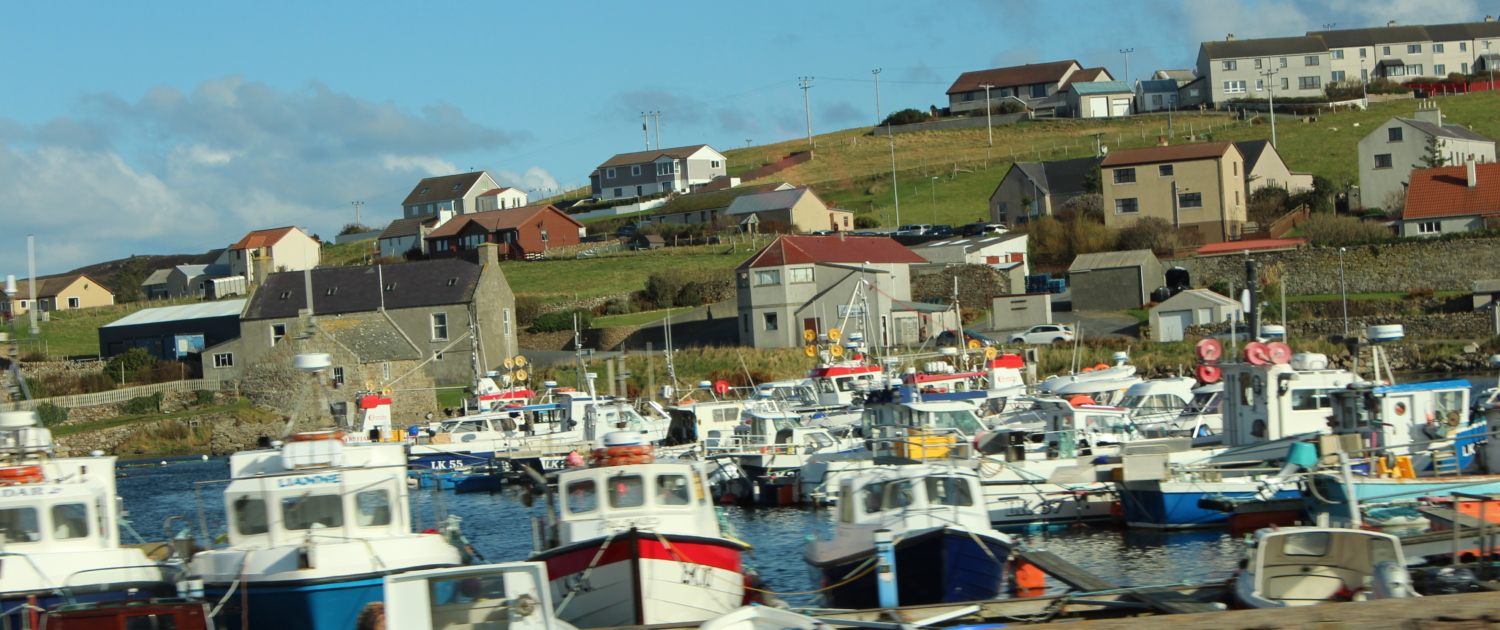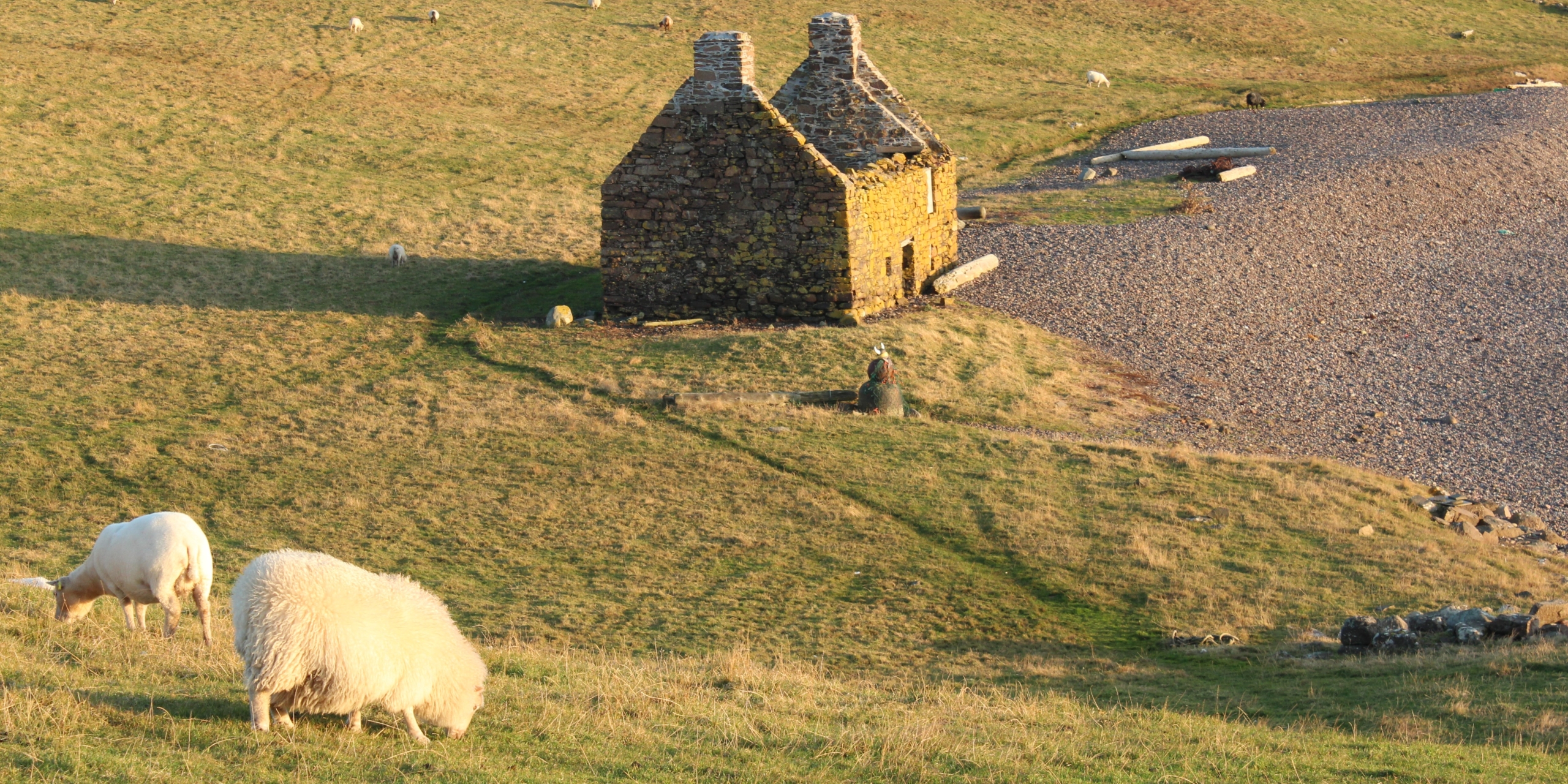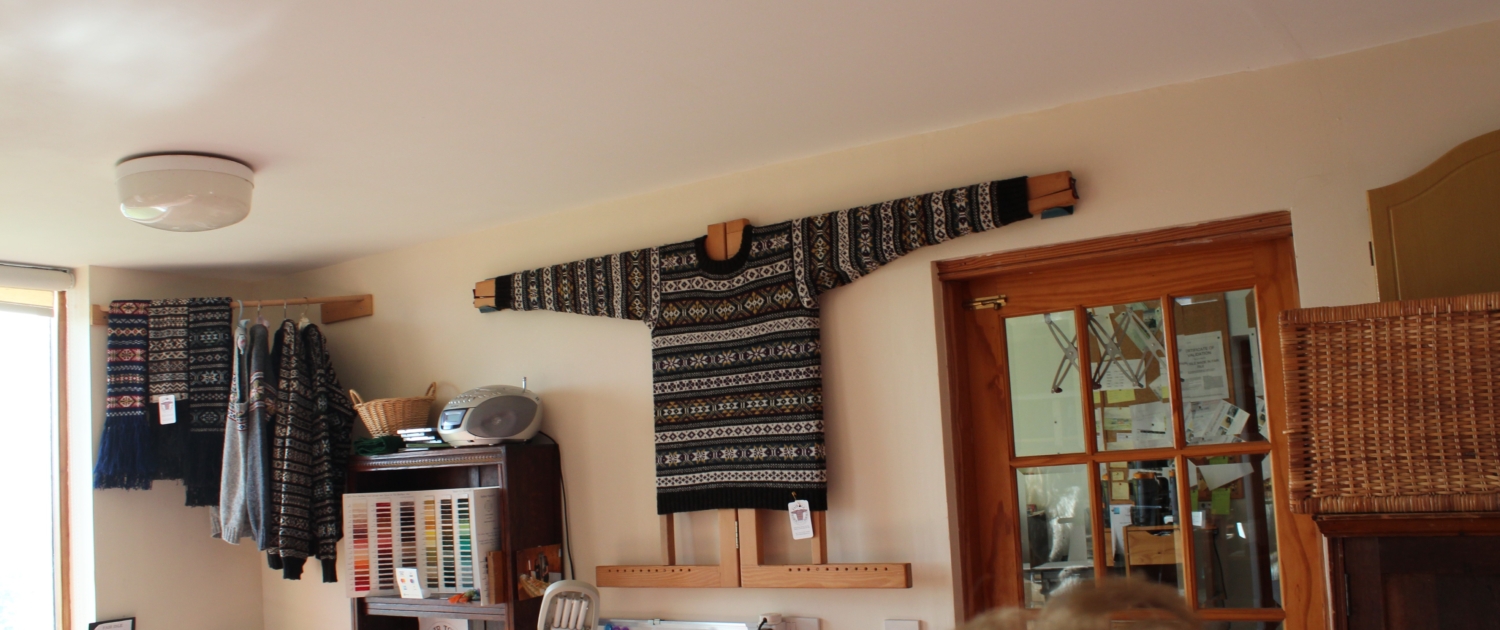A dream trip to Scotland in 2019 culminated in a visit to the 10th annual Shetland Wool Week. After an eventful 12-hour ferry ride from Aberdeen, we arrived in Lerwick, Shetland at the beginning of our 9-day visit to the lovely Shetland Isles.
It was soon quite apparent that the knitting and spinning traditions of this windswept and remote group of islands were borne out of necessity as much as cultural traditions. As part of the events of Wool Week, we were able to visit many different islands and towns and learn about how each region developed its own traditions based on geography, availability of resources, and, of course, the native Shetland sheep.
Most knitters are familiar with Fair Isle, one of the larger but more remote islands of the Shetland archipelago, which is home to traditional stranded colourwork knitting that takes its name from the island. Although lesser known, the northern Shetland island of Unst is famous for its fine cobweb lace shawls – think “wedding ring shawls,” where the lace is so fine the shawl can be pulled through the diameter of a wedding ring. The artistry of these fine shawls was on display in the Shetland Museum and Archives as well as many of the local shops and community centres, and one could certainly purchase cobweb yarn to make one, but how on earth did they spin fine enough to create these gossamer webs?
Shetlanders are well known for learning spinning and knitting at a young age. In a time when textile arts were a household staple and were often one of the few ways available to earn a living, most people either spun or knit or both. While the tradition fell off for a while in the 20th century, new generations of spinners and knitters are again learning in school.
We visited many native Shetlanders both at home and in their studios, and I learned that Shetland spinning wheels are necessarily small because of a traditional scarcity of wood on these windswept and treeless isles. What was very curious to me was that most Shetlanders also spin in the grease, something that both intrigued and appalled me. Why, I thought, would they spin a stinky, greasy, sticky fleece when they could just wash the darn thing? What I found out was both eye-opening and enlightening, and contributed to me becoming a better spinner.
I was fortunate to be able to learn from a wonderful Shetland lady named Margaret and her Fae Ewe Tae You (From Ewe to You) class, where we learned the traditional way to prepare a Shetland fleece for spinning. We were handed aprons, some greasy locks, and a dog comb, and we learned how to comb the staples to spin them in the traditional Shetland way.
 Margaret showed us how to grab a lock and hold it firmly by the butt end, using the dog comb to gently comb out the snarls and vegetable matter. Turn the lock and grab the newly combed tip end, giving it a little twist in the middle so you don’t inadvertently pull all the combed fibres out of the lock, and comb the butt end of the lock in the same way. Once you have a neat little pile of combed locks, you can start spinning them into fine, fine threads.
Margaret showed us how to grab a lock and hold it firmly by the butt end, using the dog comb to gently comb out the snarls and vegetable matter. Turn the lock and grab the newly combed tip end, giving it a little twist in the middle so you don’t inadvertently pull all the combed fibres out of the lock, and comb the butt end of the lock in the same way. Once you have a neat little pile of combed locks, you can start spinning them into fine, fine threads.
I have to admit, I was a skeptic about spinning in the grease. First of all, I thought about all of the gunk I’d have to clean off my equipment afterward. I was not the most enthusiastic student, perhaps even a little bit sullen. However, Margaret had the patience of a saint and wouldn’t take “why on earth would I want to do this?” for an answer. She was sure I would take to this new form of spinning as soon as I tried it.
 Margaret was right. By spinning in the grease, the sometimes short and slippery Shetland fibres stuck together better, which allowed a spinner to be able to spin the very fine, gossamer threads that spinning for Shetland lace requires. I had never had a lot of success spinning fine, but with Margaret’s guidance and some greasy Shetland fleece, I was spinning the finest threads I had ever spun – and having a grand old time doing it! By the end of the class, I was a convert. Annoyingly so. I told anyone who listened how wonderful the class and the technique was, and I would certainly be trying it when I returned home.
Margaret was right. By spinning in the grease, the sometimes short and slippery Shetland fibres stuck together better, which allowed a spinner to be able to spin the very fine, gossamer threads that spinning for Shetland lace requires. I had never had a lot of success spinning fine, but with Margaret’s guidance and some greasy Shetland fleece, I was spinning the finest threads I had ever spun – and having a grand old time doing it! By the end of the class, I was a convert. Annoyingly so. I told anyone who listened how wonderful the class and the technique was, and I would certainly be trying it when I returned home.
Thanks to Margaret, I was able to understand how this particular textile tradition was born in this place with the tools at hand for the thrifty Shetlanders. Why waste time, energy, and soap washing your fleece beforehand when you would be washing the finished skein anyway? Not to mention the incredibly fine threads one can spin with this method.
The takeaway from this experience was that I learned to open my mind to other ways of doing things and learn from people who have been spinning way longer than I have. I learned both humility and a really useful new spinning skill. And I was also able to experience the beauty of the Shetland Isles and the hospitality of Shetlanders. I would highly recommend a trip to Shetland to any knitter or spinner. I can’t wait to go back!
Alex Avdichuk spins and knits in Toronto, Canada. Known for her epic projects, she hopes to live long enough to spin her collection of fibre from rare (and not so rare) breeds of sheep, which currently sits at ninety-six. (To do so, she plans to live to be 153).








Leave a Reply
Want to join the discussion?Feel free to contribute!